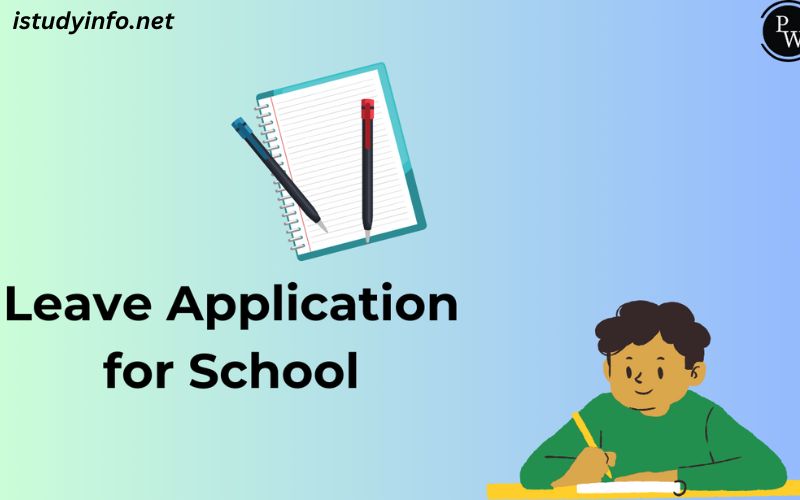As a student, there may be times when you need to take a leave of absence from school for various reasons, such as illness, family emergencies, or important events. In such cases, it is crucial to communicate with your school administration and provide a formal request for a leave of absence. This is where a student leave letter comes into play.
A student leave letter is a formal document that outlines your need for a leave of absence and provides the necessary details to the school authorities. It serves as a way to formally request the leave and ensure that your absence is properly documented and approved. By understanding the importance and proper format of a student leave letter, you can effectively communicate your situation and minimize any disruptions to your academic progress.
Importance of Writing a Leave Letter
Writing a leave letter as a student holds several important benefits:
- Formal Communication: A leave letter establishes a formal channel of communication between you and the school administration. It demonstrates your professionalism and commitment to your education.
- Documented Absence: The leave letter provides a written record of your absence, which can be important for attendance records, make-up work, and potential future reference.
- Approval Process: Many schools require a formal leave letter as part of the approval process for a leave of absence. Without this letter, your request may not be granted, leading to potential academic consequences.
- Maintaining Transparency: By proactively communicating your situation through a leave letter, you demonstrate transparency and responsibility, which can positively impact your relationship with the school administration.
- Avoiding Disruptions: A well-written leave letter can help minimize any disruptions to your academic progress, ensuring that you can make up missed work and maintain your standing in your classes.
Components of a Student Leave Letter
A typical student leave letter should include the following key components:
- Header: This includes your name, student ID, grade level, and contact information.
- Date: The date you are writing the letter.
- Recipient: The name and title of the school official or administrator to whom the letter is addressed.
- Subject: A clear and concise statement of the purpose of the letter, such as “Request for Leave of Absence.”
- Body: This section should provide the following information:
- Reason for the leave of absence: Clearly explain the reason for your request, such as illness, family emergency, or personal event.
- Duration of the leave: Specify the start and end dates of the requested leave.
- Impact on academic work: Discuss how you plan to make up any missed assignments, tests, or other academic responsibilities.
- Contact information: Provide your contact information, including a phone number and email address, in case the school needs to reach you during your leave.
- Conclusion: End the letter with a respectful closing, such as “Thank you for your consideration,” and your signature.
Format and Structure of a Student Leave Letter
The format and structure of a student leave letter should follow a professional and formal style. Here is a suggested format:
-
HeaderYour Name
- Student ID
- Grade Level
- Contact Information (Phone, Email)
-
Date
-
Recipient’s Name and Title
- Name of School Official or Administrator
- School Name and Address
-
Subject: Request for Leave of Absence
-
Body
- Paragraph 1: Reason for the leave of absence
- Paragraph 2: Duration of the leave
- Paragraph 3: Impact on academic work and plan for make-up
- Paragraph 4: Contact information
-
Conclusion
- Respectful closing
- Your Signature
Tips for Writing an Effective Student Leave Letter
To ensure your student leave letter is effective and well-received, consider the following tips:
- Be Specific and Concise: Clearly state the reason for your leave and the duration, without including unnecessary details.
- Maintain a Professional Tone: Use a formal and respectful tone throughout the letter, avoiding casual language or emotional expressions.
- Provide a Plan for Make-Up Work: Demonstrate your commitment to your studies by outlining how you will make up for any missed assignments or exams.
- Proofread and Edit: Carefully review your letter for any spelling, grammar, or formatting errors before submitting it.
- Submit the Letter Promptly: Make sure to submit your leave letter as soon as possible, following the school’s guidelines and deadlines.
- Follow Up: If you don’t receive a response within a reasonable timeframe, follow up with the school administration to ensure your request has been received and is being processed.
Sample Student Leave Letter
Here is an example of a well-structured student leave letter:
[Your Name]
[Student ID]
[Grade Level]
[Phone Number]
[Email Address][Recipient’s Name and Title]
[School Name]
[School Address]
Subject: Request for Leave of Absence
Dear [Recipient’s Name],
I am writing to request a leave of absence from [School Name] due to a family emergency. My grandmother has been hospitalized, and I need to be with my family during this time.
I am requesting a leave of absence from [Start Date] to [End Date]. During this time, I will work closely with my teachers to ensure that I can make up any missed assignments or exams. I have already spoken with my teachers, and they have agreed to provide me with the necessary materials and support to stay on track with my studies.
I can be reached at [Phone Number] or [Email Address] should you have any questions or concerns. Thank you in advance for your understanding and consideration of my request.
Sincerely,
[Your Name]
Common Mistakes to Avoid in a Student Leave Letter
When writing a student leave letter, it’s important to avoid the following common mistakes:
- Lack of Specificity: Avoid vague or ambiguous language when describing the reason for your leave and the duration.
- Emotional Tone: Maintain a professional and formal tone throughout the letter, rather than an emotional or overly personal one.
- Failure to Provide a Plan: Neglecting to outline how you will make up for missed work can make your request less compelling.
- Incorrect Formatting: Ensure that the letter is properly formatted, with clear sections and appropriate spacing.
- Grammatical and Spelling Errors: Proofread your letter carefully to eliminate any errors that could undermine its professionalism.
- Late Submission: Submit your leave letter in a timely manner, following the school’s guidelines and deadlines.
How to Submit a Student Leave Letter
The process for submitting a student leave letter may vary depending on the specific school or district policies. In general, you should follow these steps:
- Obtain the Necessary Forms: Check with your school’s administration or website to see if they have a specific form or template for student leave letters.
- Complete the Letter: Carefully fill out all the required information and ensure that the letter is well-written and formatted correctly.
- Submit the Letter: Follow the school’s instructions for submitting the leave letter, which may involve delivering it in person, sending it via email, or uploading it to a student portal.
- Retain a Copy: Keep a copy of the submitted leave letter for your own records, in case you need to reference it later.
Alternatives to a Student Leave Letter
In some cases, a student leave letter may not be the only option for requesting a leave of absence. Depending on the school’s policies, you may also consider the following alternatives:
- Medical Leave: If your leave is due to a medical condition, you may be able to request a medical leave, which may have different requirements and procedures.
- Family Emergency Leave: Some schools have specific policies for leaves related to family emergencies, which may have a different application process.
- Personal Leave: Certain schools may allow students to request a personal leave of absence for events or circumstances that do not fall under medical or family emergency categories.
It’s important to research your school’s specific policies and procedures to determine the best course of action for your situation.
Conclusion
Writing an effective student leave letter is a crucial skill for any student to develop. By understanding the importance of this document, the key components it should include, and the best practices for crafting it, you can ensure that your request for a leave of absence is well-received and accommodated by your school administration.
Remember, a student leave letter is not only a formal communication tool but also a reflection of your responsibility and commitment to your education. By following the guidelines and tips outlined in this article, you can create a leave letter that demonstrates your professionalism and helps minimize any disruptions to your academic progress.
If you need further assistance in drafting your student leave letter, consider consulting with a professional writing tutor or academic advisor. They can provide personalized guidance and feedback to help you craft a compelling and effective letter that meets your school’s requirements.

















Thank you for sharing superb informations. Your website is very cool. I am impressed by the details that you¦ve on this blog. It reveals how nicely you perceive this subject. Bookmarked this website page, will come back for more articles. You, my pal, ROCK! I found simply the info I already searched all over the place and just could not come across. What a perfect site.